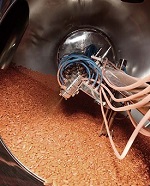 |
| Mankind Pharma Chairman and Founder R.C. Juneja--Courtesy of Mankind |
Indian drugmaker Mankind Pharma intends to add an active pharmaceutical ingredient (API) manufacturing facility to its network of 16 production plants in India.
The company says it will invest about 100 crore rupees ($16 million) to build an API facility in northern India, The Economic Times reports. The company produces antibiotics, erectile dysfunction drugs, condoms, pregnancy tests and over-the-counter products. In 2010, it acquired the antihistamine product Longifene from UCB.
"We are coming up with an API center in Rajasthan which will be functional by end of this year and will give boost to the pharma industry by manufacturing affordable drugs in the country," Mankind Pharma Chairman and Founder R.C. Juneja said in a statement.
Mankind sells products in 14 countries outside of India spanning Asia, Africa and the Gulf region. It says it expects to have operations in Uzbekistan and Tajikistan soon.
 |
| Production at a Mankind facility--Courtesy of Mankind |
The expansion comes as India is looking for ways to make API production more affordable for drugmakers so that they can reduce their need to buy from China, which currently provides about 80% of the APIs used in Indian drugs. The government has said it will donate land for companies wanting to build API plants.
Other Indian drugmakers have been looking to expand API production. Strides Arcolab got approval last month to buy Shasun Pharmaceuticals in a $200 million deal that in part expands its API manufacturing capacity. Strides also indicated it was looking to spread its production over more plants in a tougher regulatory environment that has left some drugmakers unable to launch products when the FDA closed down API plants. India's Ranbaxy Laboratories, which was bought out last month by Sun Pharmaceutical, lost its FDA approval to produce generics of two blockbuster products when its key API plant was closed due to FDA concerns.
- read the Economic Times story